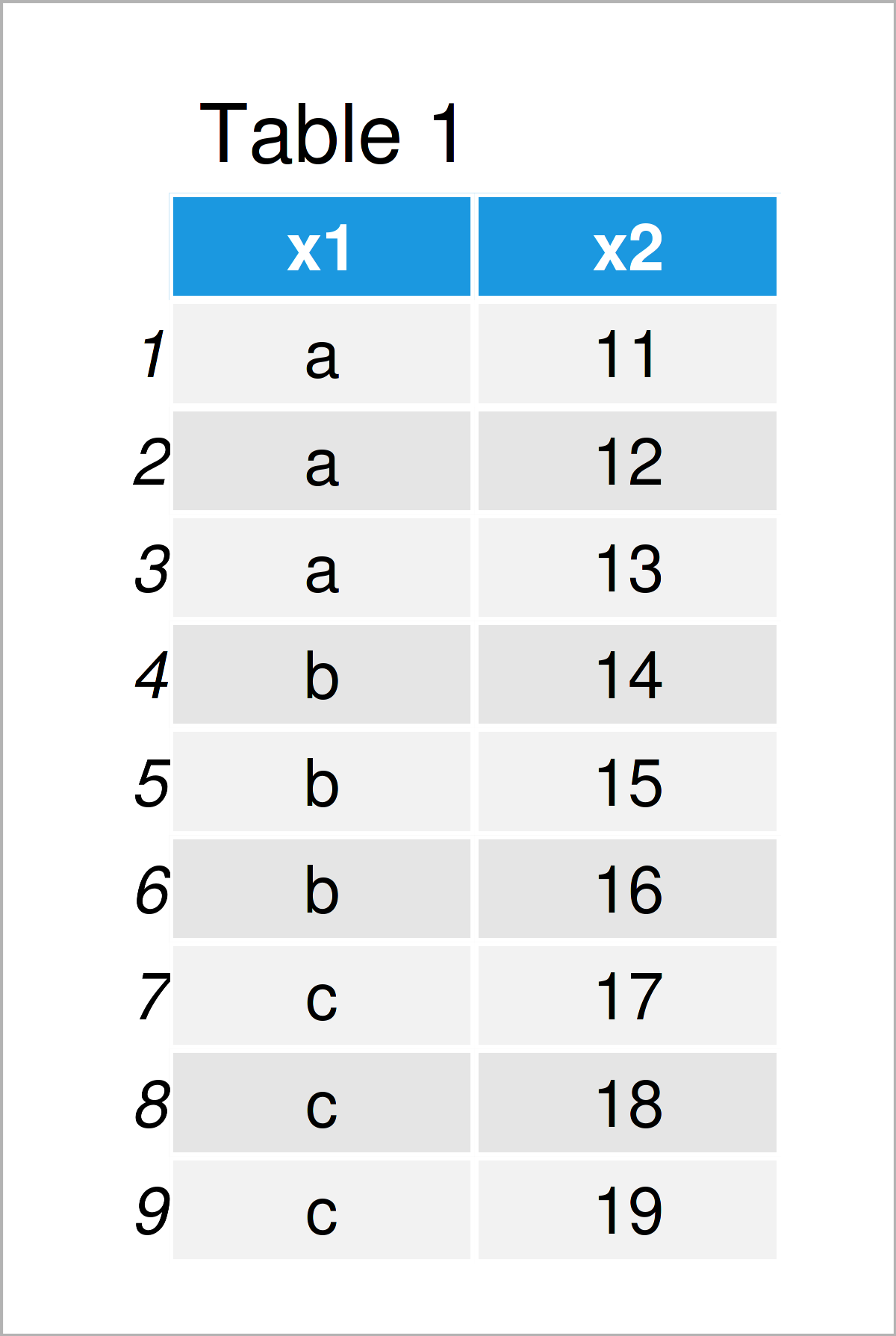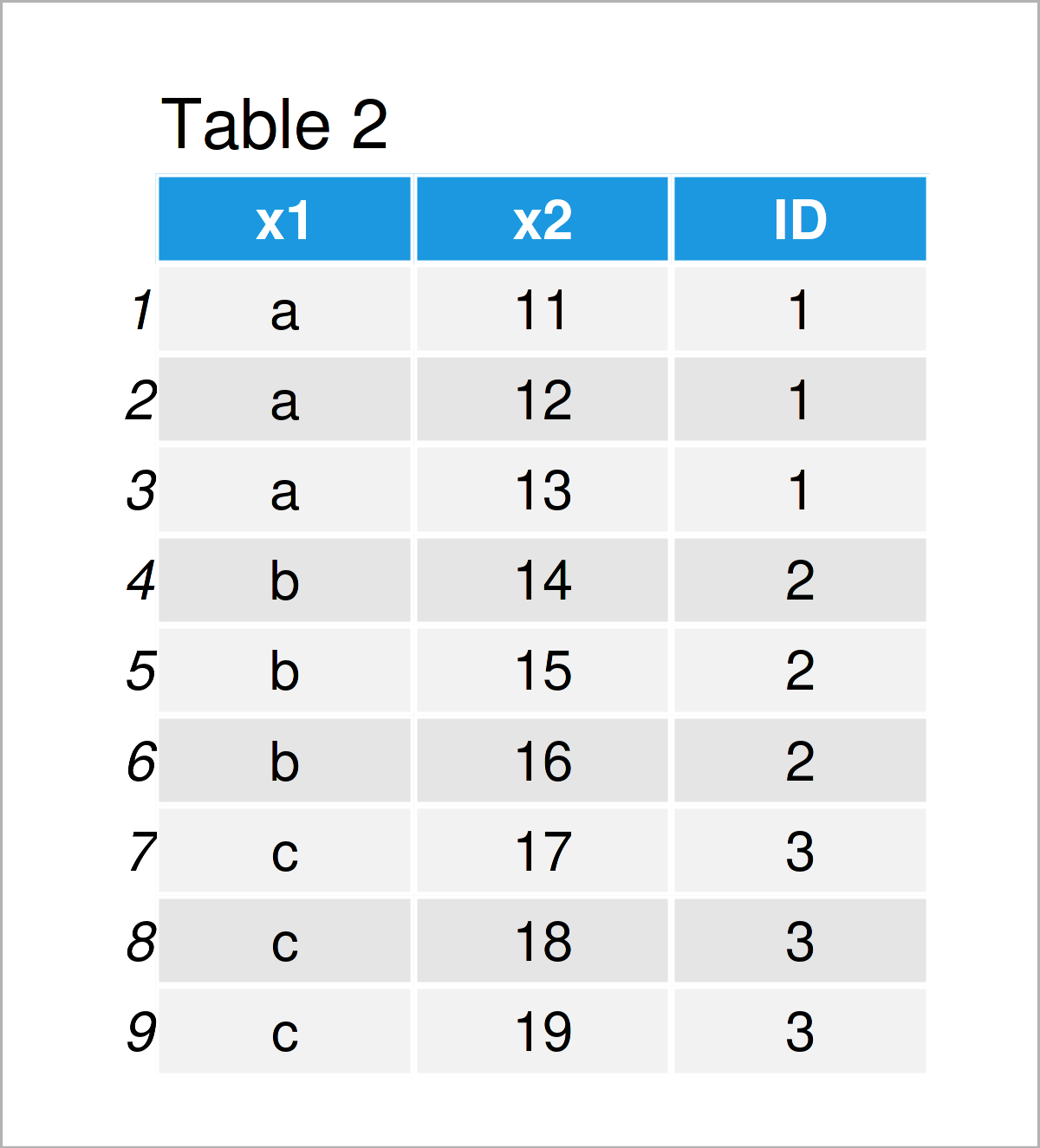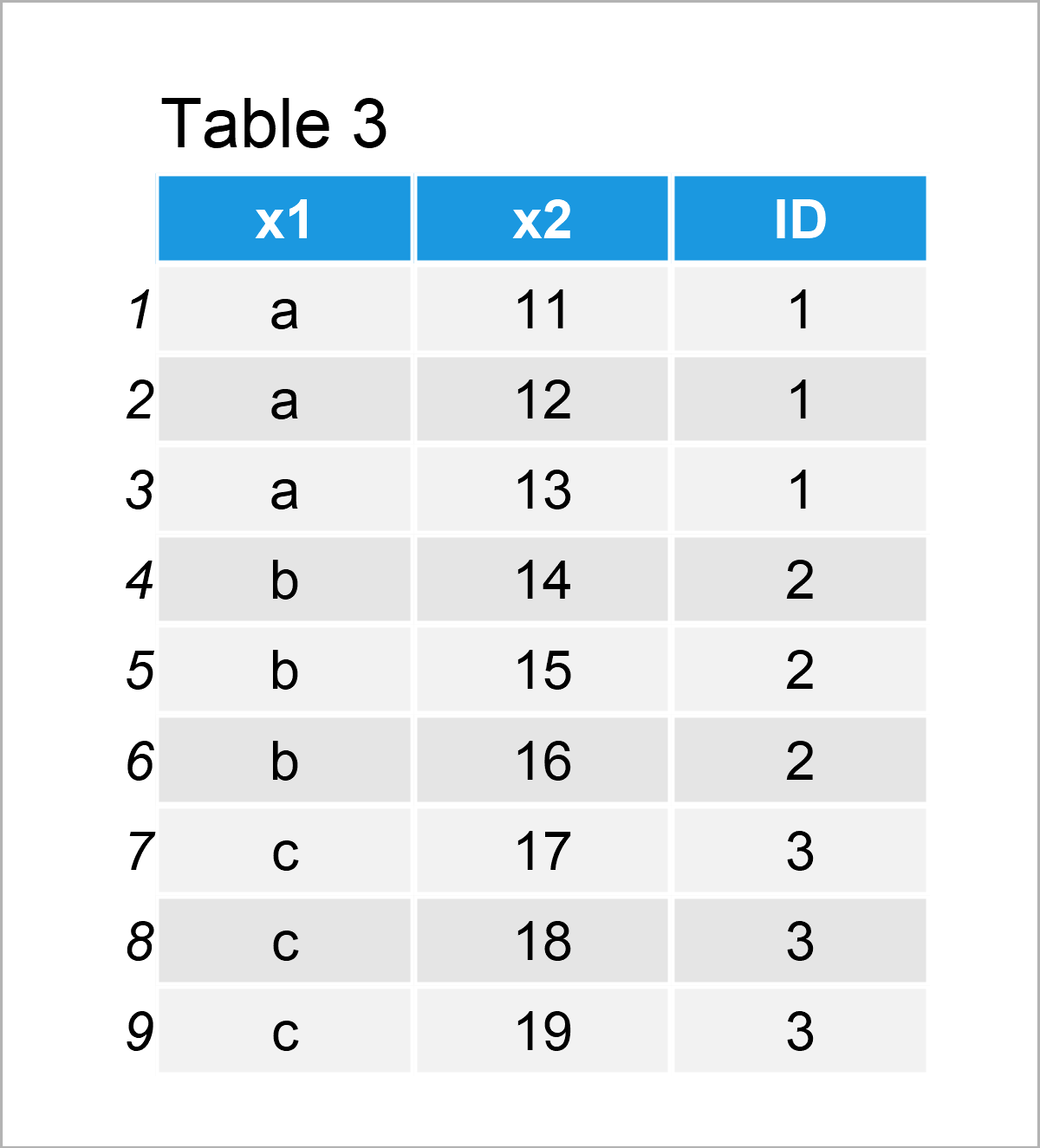Assigning Group Variable Based on Continuous Values
Assign Unique ID for Each Group in R (3 Examples)
In this R tutorial you'll learn how to create an ID number by group.
The article will consist of this content:
Here's how to do it…
Creation of Example Data
We'll use the following data as basement for this R programming tutorial:
data <- data. frame (x1 = rep(letters[ 1 : 3 ], # Create example data each = 3 ), x2 = 11 : 19 ) data # Print example data
data <- data.frame(x1 = rep(letters[1:3], # Create example data each = 3), x2 = 11:19) data # Print example data

Have a look at the table that got returned by the previous R syntax. It shows that our example data has nine lines and two variables. The variable x1 has the character data type and the variable x2 has the integer class.
Example 1: Add Consecutive Group Number to Data Frame Using Base R
In this example, I'll demonstrate how to group by a variable and then assign an ID based on these groups using the transform function of the basic installation of the R programming language.
Have a look at the following R code:
data_id1 <- transform(data, # Create ID by group ID = as . numeric (factor(x1) ) ) data_id1 # Print data with group ID
data_id1 <- transform(data, # Create ID by group ID = as.numeric(factor(x1))) data_id1 # Print data with group ID

After executing the previous R programming code the data frame with consecutive ID column illustrated in Table 2 has been created.
Example 2: Add Consecutive Group Number to Data Frame Using dplyr Package
In this example, I'll demonstrate how to create a unique ID column by group using the dplyr package.
First, we need to install and load the dplyr package:
install. packages ( "dplyr" ) # Install & load dplyr package library( "dplyr" )
install.packages("dplyr") # Install & load dplyr package library("dplyr")
Next, we can use the group_by and mutate functions of the dplyr package to assign a unique ID number to each group of identical values in a column (i.e. x1):
data_id2 <- data %>% # Create ID by group group_by(x1) %>% dplyr:: mutate (ID = cur_group_id( ) ) data_id2 # Print data with group ID # # A tibble: 9 x 3 # # Groups: x1 [3] # x1 x2 ID # <chr> <int> <int> # 1 a 11 1 # 2 a 12 1 # 3 a 13 1 # 4 b 14 2 # 5 b 15 2 # 6 b 16 2 # 7 c 17 3 # 8 c 18 3 # 9 c 19 3
data_id2 <- data %>% # Create ID by group group_by(x1) %>% dplyr::mutate(ID = cur_group_id()) data_id2 # Print data with group ID # # A tibble: 9 x 3 # # Groups: x1 [3] # x1 x2 ID # <chr> <int> <int> # 1 a 11 1 # 2 a 12 1 # 3 a 13 1 # 4 b 14 2 # 5 b 15 2 # 6 b 16 2 # 7 c 17 3 # 8 c 18 3 # 9 c 19 3
By running the previous R programming syntax we have created the tibble shown in the previous RStudio console output.
Example 3: Add Consecutive Group Number to Data Frame Using data.table Package
In this example, I'll demonstrate how to use the data.table package to add a unique ID variable by group.
We first have to install and load the data.table package:
install. packages ( "data.table" ) # Install data.table package library( "data.table" ) # Load data.table
install.packages("data.table") # Install data.table package library("data.table") # Load data.table
Next, we can use the functions of the data.table package to assign an ID number to our data:
data_id3 <- data # Duplicate data setDT(data_id3) [ , ID := . GRP, by = x1] # Create ID by group data_id3 # Print data with group ID
data_id3 <- data # Duplicate data setDT(data_id3)[ , ID := .GRP, by = x1] # Create ID by group data_id3 # Print data with group ID

After executing the previous R code, the data set with ID column shown in Table 3 has been created. Note that this data set has the data.table class.
Video, Further Resources & Summary
I have recently published a video on my YouTube channel, which illustrates the contents of this tutorial. You can find the video below:
Furthermore, you could have a look at the related posts on my homepage. Some tutorials about topics such as counting, groups, extracting data, and numeric values are listed below.
- Select Row with Maximum or Minimum Value in Each Group
- Count Number of Cases within Each Group of Data Frame
- Select First Row of Each Group in Data Frame
- Count Unique Values by Group in R
- R Programming Overview
Summary: In this R tutorial you have learned how to add a consecutive ID number by group. Don't hesitate to let me know in the comments, if you have any additional questions.
Source: https://statisticsglobe.com/assign-unique-id-for-each-group-in-r
0 Response to "Assigning Group Variable Based on Continuous Values"
إرسال تعليق